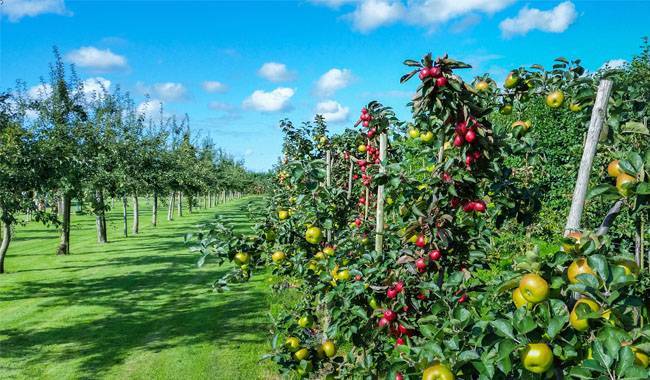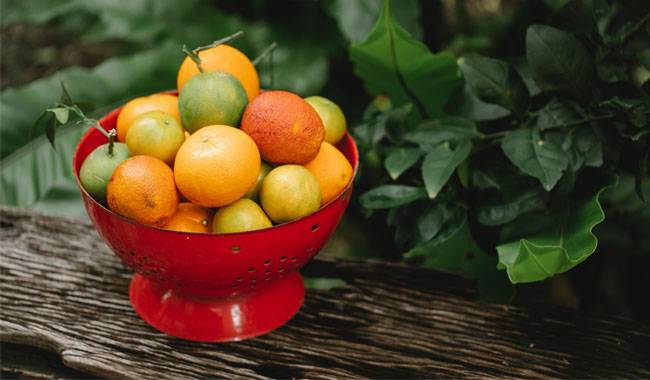
It seems that only fruit trees grow and produce on their own. Experienced gardeners know how much effort it takes to achieve a quality harvest. How frustrating it can be when, despite great efforts, the results are not as good as they should be.
Is the orchard always sick? Is the fruit little, small and unpalatable? Do some trees die? Most likely, the explanation for everything is simple – fundamental mistakes have been made when laying out the orchard, and this has led to regrettable results.
To correct, of course, it is possible, but it is better to avoid these mistakes.
Without considering the characteristics of the growing area
Usually, we do not have to choose a site for an orchard, as it is, so it will be. But it is still necessary to analyze its characteristics and make conclusions – it is within our power.
Then, if the area under the orchard is located on the plain, it is suitable for all fruit crops. However, if there is a slope facing east and especially south, remember that these areas are heated more quickly in spring and more strongly in summer.
Therefore, by planting crops that wake up early after winter (e.g. apricots) on such a slope, you risk them constantly flowering early and suffering from spring frosts, while the moisture-loving ones (pears) suffer from the summer heat. As a result, you may not be able to wait for the harvest.
It is also worth considering that trees that are more resistant to wind and drought should be planted in the upper part of such plots, while trees that are resistant to overwatering should be planted in the lower part where water accumulates.
If your property is located in a basin where cold and humid air accumulates, then most likely you should not plant an orchard at all, or choose crops very carefully.
After all, they will bear all the worst elements – cold temperatures at flowering and fungal disease outbreaks due to high humidity.
The specifics of the soil are ignored
It is clear that the quality of life of a fruit tree depends directly on its root system, which in turn depends on the soil in which it grows. Most fruit trees have a strong root system that extends inward and spreads outward.
It also requires a large supply of nutrient media and water for proper nutrition.
Growing an orchard on poor, sandy and stony, waterlogged, dense clay or saline soils requires a very selfless effort. Gardeners planting trees in such soils without preparing and improving them are unlikely to get a good harvest.
Soils should be permeable and water-permeable. Such soil is called structural soil; it is like a sponge.
But each variety of fruit tree also has its own “requirements”. Apples are “suitable” for light black, loamy, or sandy loam soils. They should be loose enough and moderately moist.
Apple trees do not tolerate over-watering. Cherries prefer light loamy sandy soils, pears – light loamy soils rich in humus, and plums only grow and fruit in loamy, fertile, and water-stocked soils.
It is also worth measuring soil acidity; for most fruit crop seedlings, soil acidity should be neutral, with a pH of 5.5-7.
High groundwater table
When planning to grow certain fruit crops, it is worthwhile to find out the level of groundwater. Typically, tall and long-lived seedlings have a deep root system that can reach more than 80inch (2 meters).
If you have high groundwater on your plot, these root systems will be submerged in water, rotting and suffocating most of the time, and the trees themselves will somehow be there – no harvest to speak of.
For drupes, you can achieve an indulgence level of 60inch (1.5m) or less, and for berries even less.
No protection from the wind
If you plant your orchard in an open, windy area, it is likely to suffer from frost in the winter (as the wind blows away the snow) and dry, sultry winds in the summer.
If the wind is constantly blowing, pollinating bees will have a hard time flying and young plants that sway from side to side will not take root.
Therefore, when planting an orchard, you should also plant windbreaks on both the north and east sides of the plot. Don’t forget to tie the young plants to the supports as well.

Low diversity of orchard species
Usually, gardeners plant only one type of plant, such as apple trees, when they start an orchard. This is often the case when orchards are planted for profit.
On the one hand, such an orchard is easier to take care of and all work can be done on all plants at once (fertilizing, watering, spraying).
However, as a rule, in a monoculture orchard, the plants need more thorough and frequent pest control.
After all, in such an orchard they spread throughout the plants at lightning speed. Focus on a single crop and in any case of miscalculation you may not harvest at all.
Non-zoned varieties
In order to get a good and regular harvest, it is very important to plant fruit trees that grow locally and are adapted to your area. This rule is often overlooked when buying seedlings from random sellers or for an attractive price.
As a result, seedlings from more southern regions will not do well in your area, while more northern seedlings will suffer from your regular winter thaw. In both cases, this will affect yields and even the lifespan of the entire plant.
Planting increases
Fruit trees need light, air, and a certain amount of soil in order to develop and flower and produce fruit.
Often in hobby orchards, plants are planted too close together in order to maximize plot size – canopies are close together, creeping up on each other, branches tend to go up, and bottoms are stripped away.
The result is lower yields and shorter plant life spans. The strongest ones will survive because there is competition among them for light, nutrients, and water.
Normal planting is considered to have a free passage of people between adult plants. Therefore, when purchasing young plants, ask about the future size of the plant.
Improper planting
In order for seedlings to root well and thus move quickly into the fruiting stage, they must be planted correctly. The pit for planting is prepared in advance. Preferably six months or at least one month before planting. It has sufficient width and depth and is filled with a loose fertile mixture.
If the sapling is planted immediately (in a freshly dug hole), filled with soil inevitably will give shrinkage and the sapling with its roots and neck will sink below the soil level, which is an unacceptable fact.
If the hole is made beforehand, all physical and chemical processes have already taken place inside, and during planting, it is enough to make a small pit according to the size of the root system.
Planted seedlings usually have left and an open root system. This is not the correct approach. The roots may be severely damaged and intentionally shortened when digging them out. They do not work well, and the leaves are actively evaporating water. Such seedlings are difficult to root.
It is also worth considering such an important factor as the time of planting. For southern regions with mild winters and hot, dry summers, autumn is the preferred time for planting. As a result, seedlings will receive maximum moisture and have a good chance of rooting.
However, in northern regions with regular summer precipitation, it is best to plant in the spring so that the seedlings have time to root and acclimate before the harsh winter sets in.
Lack of pollinating plants
Many fruit trees, especially drupes, need a nearby pollinator to produce good fruit. This can be one mutually pollinating species, seedlings of the same species but different varieties, or just one seedling (wild).
Therefore, when buying plants for your orchard, ask if you need to buy two or more plants.
When there is no plan at all
It often happens that novice gardeners plant a few trees and shrubs simply because they have free or very cheap planting materials and space to spare.
“Well, why not buy one of those interesting summer varieties of apple trees, because the saplings cost some money and there is a lot of free space on the plot.
Do you say I already have two varieties of summer apple trees? Nothing! Where there are two, there are three!”
A few years later, those three apple trees grow up and start to produce a good crop. Then you get, as the joke goes, “apple pie, apple quiche, apple cider, juice, jam. Don’t you cut down those apple trees?
Choose carefully not only the type of fruit trees that will grow on your plot but also the variety, taking into account that you can handle the harvest without much effort.
After all, it grows with difficulty and, foolishly, agrees, if then mediocre disappears, simply because there is too much of it. After all, it happens, not only to sell, in the years of production, it and no one will take for nothing!”.
Finally, it is worth adding that even if you managed to avoid all these mistakes, in order to get a large and high-quality harvest in the orchard, it is necessary to follow the rules of agricultural technology – timely watering, fertilization, treatment of pests, and diseases, pruning.
We wish you success and a good harvest!







